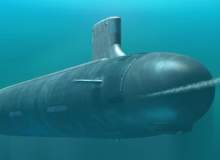
Deep Dive Duel: Akula vs. Virginia Class Submarines Max
News of Russia sailing an Akula-class submarine into the Gulf of Mexico unnoticed may have highlighted a shocking shortfall of territorial security for the US, but it also underpinned the submarine’s operational capabilities.
Boasting an improved stealth profile over its predecessors and an impressive top speed and diving range, the Akula-class submarines have become a crucial part of Russia’s naval arsenal since their induction in 1984. The closest comparison to the Akula-class within the US Navy’s fleet is the Virginia-class submarine, which has been in service with the US Navy since 2004.
With similar capabilities and operational profiles, just how do the Akula-class and Virginia-class submarines stack up against each other?
Weaponry and armament
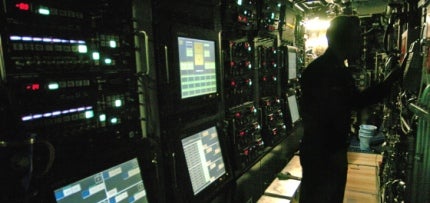
Virginia-class submarines have one of the most advanced torpedo delivery systems in the US Navy fleet. Image courtesy of the US Navy.
Both attack submarines have distinctly similar levels of armament, with both the US and Russia complying with the START II Strategic Arms Reduction Treaty that capped the number of strategic missile submarines at 14. The Akula-class submarine’s armament is split between four 533mm torpedo tubes, capable of carrying 28 torpedoes, and four 650mm torpedo tubes, capable of carrying 12 torpedoes. The Virginia-class submarines are also equipped with four 533mm torpedo tubes, however they are also equipped with 12 vertical launch systems capable of firing BGM-109 Tomahawk cruise missiles.
Development and unit cost
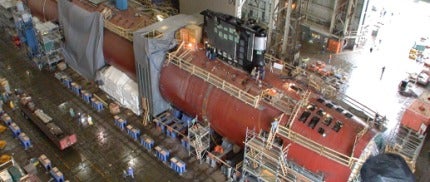
A Virginia-class submarine under construction by Electric Boat. Image courtesy of the US Navy.
The Virginia-class submarines are more costly than their Russian, Akula-class counterparts as well. The estimated cost of an Akula-class submarine is $1.55bn compared to the original $2.4bn per unit price tag of an individual Virginia-class submarine. The original cost of Virginia-class submarines caused controversy as they were intended to be a cheaper alternative to the costly Seawolf submarines, causing the Navy to trigger a cost-reduction programme. The extensive use of commercial off-the-shelf equipment onboard and improvements in shipbuilding technology has reduced this cost to approximately $1.8bn per vessel.
Reactor and propulsion
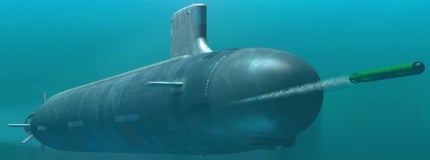
An artist’s conception of a Virginia-class submarine’s movement whilst submerged. Image courtesy of the US Navy.
The Akula-class submarines are powered by one 190MW pressurised water nuclear reactor, one OK-7 steam turbine creating 43,000 hp and two OK-2 turbogenerators that produce 2,000 kW of power. Two OK-300 retractable electric propulsors for low-speed and quiet maneuvering have also been installed to increase stealthier operation of the submarine, although the top speed using this method of propulsion is capped at 5kt.
The reactor onboard the Virginia-class submarines has been purposefully designed for the Virginia-class by Knolls Atomic Power Laboratory. The pressurised water reactor offers increased energy density and a new steam generator design which results in improved corrosion resistance and reduced life-cycle costs. The reactor itself is designed to operate for a total of 33 years without refuelling, providing a significant advantage over other submarines that are forced to refuel. Virginia-class submarines rely on pump-jet propulsors for quiet operation, and they also reduce the risk of cavitation, which can cause damage to components.
Maximum depth, speed and endurance
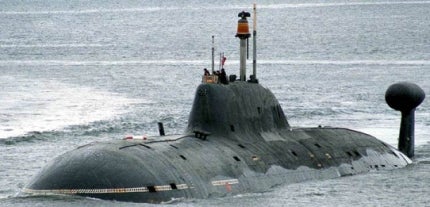
An Akula-class submarine preparing to dive.
Russia’s Akula-class submarines trump the Virginia-class submarines on both operating depth and speed, being capable of diving deeper and travelling faster whilst submerged. Akula-class submarines have a maximum operating depth of 600 metres, whereas the listed operational depth of a Virginia-class submarine is noted as greater than 250 metres. The Virginia-class submarines have a maximum speed in excess of 25 knots, whereas Akula-class submarines are capable of top speeds between 28 and 35 knots, although this is reduced significantly to 10 knots when sailing on the water’s surface. The Virginia-class submarines are, however, designed to serve for longer periods of time than the Akula-class submarines, which have a maximum endurance of 100 days. The endurance period of a Virginia-class submarine is capped only at its food supplies, allowing for longer periods at sea if required.
Stealth
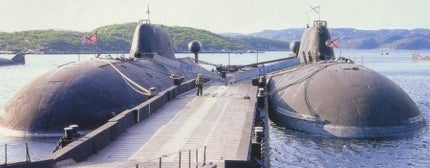
The Akula-II class submarines boast an impressive stealth profile, but not as impressive as the Virginia-class.
Having operated within the Gulf of Mexico undetected, the stealth capabilities of the Akula-class submarine have been vaunted in recent weeks. It is already acknowledged as the quietest nuclear attack submarine in service with the Russian navy, with sources claiming the Akula-II class submarines to possess a noise profile comparable to that of the US Los Angeles-class submarines.
The Virginia-class submarines can, however, go one further. Utilising newly-designed anechoic coatings, isolated structures and a new propulsor design, the Virginia-class submarines boast an acoustic signature lower than the Russian Akula-II class submarines, equivalent to that of the Seawolf-class submarines that they were designed to replace.



